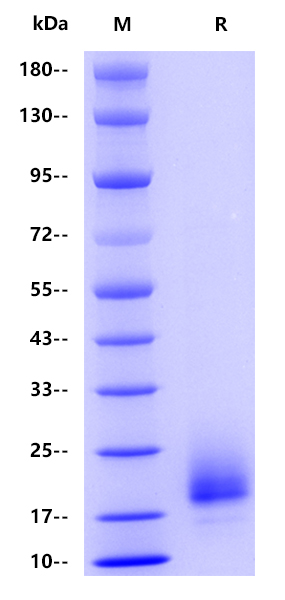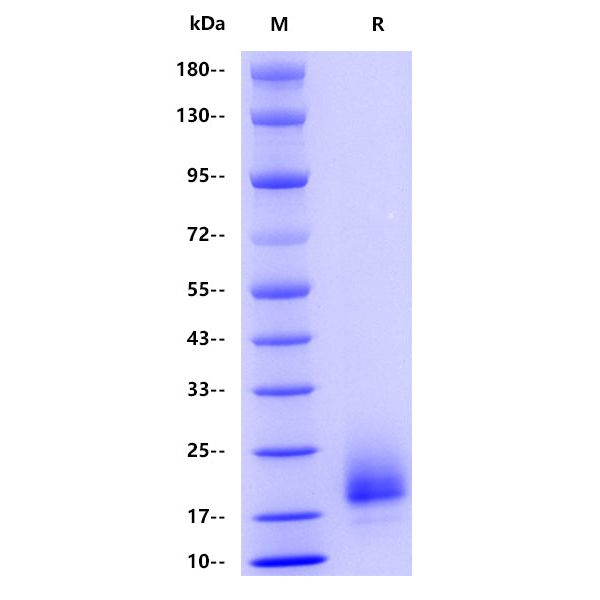Product Details
Product Details
Product Specification
| Species | Human |
| Accession | P22607 |
| Amino Acid Sequence | Protein sequence(P22607, Leu25-Arg124, with C-10*His) LGTEQRVVGRAAEVPGPEPGQQEQLVFGSGDAVELSCPPPGGGPMGPTVWVKDGTGLVPSERVLVGPQRLQVLNASHEDSGAYSCRQRLTQRVLCHFSVRGGGGSHHHHHHHHHH |
| Expression System | HEK293 |
| Molecular Weight | Theoretical:12.2kDa Actual:20kDa |
| Purity | >95% by SDS-PAGE |
| Tag | with C-10*His |
| Physical Appearance | Lyophilized Powder |
| Storage Buffer | Lyophilized from a 0.2 μm filtered solution of 0.2M PBS, 1mM EDTA, pH7.4. |
| Reconstitution | Reconstitute no more than 1 mg/mL according to the size in deionized water after rapid centrifugation. |
| Stability & Storage | 12 months from date of receipt, -20 to -70 °C as supplied. 6 months, -20 to -70 °C under sterile conditions after reconstitution. 1 week, 2 to 8 °C under sterile conditions after reconstitution. Please avoid repeated freeze-thaw cycles. |
Background
Fibroblast growth factor receptor 3 is a protein that in humans is encoded by the FGFR3 gene. FGFR3 has also been designated as CD333 (cluster of differentiation 333). The protein encoded by this gene is a member of the fibroblast growth factor receptor family, where amino acid sequence is highly conserved between members and throughout evolution. FGFR family members differ from one another in their ligand affinities and tissue distribution. This particular family member binds both acidic and basic fibroblast growth factor and plays a role in bone development and maintenance. The FGFR3 protein plays a role in bone growth by regulating ossification. Defects in the FGFR3 gene has been associated with several conditions, including craniosynostosis and seborrheic keratosis.
Picture
Picture
SDS-PAGE



